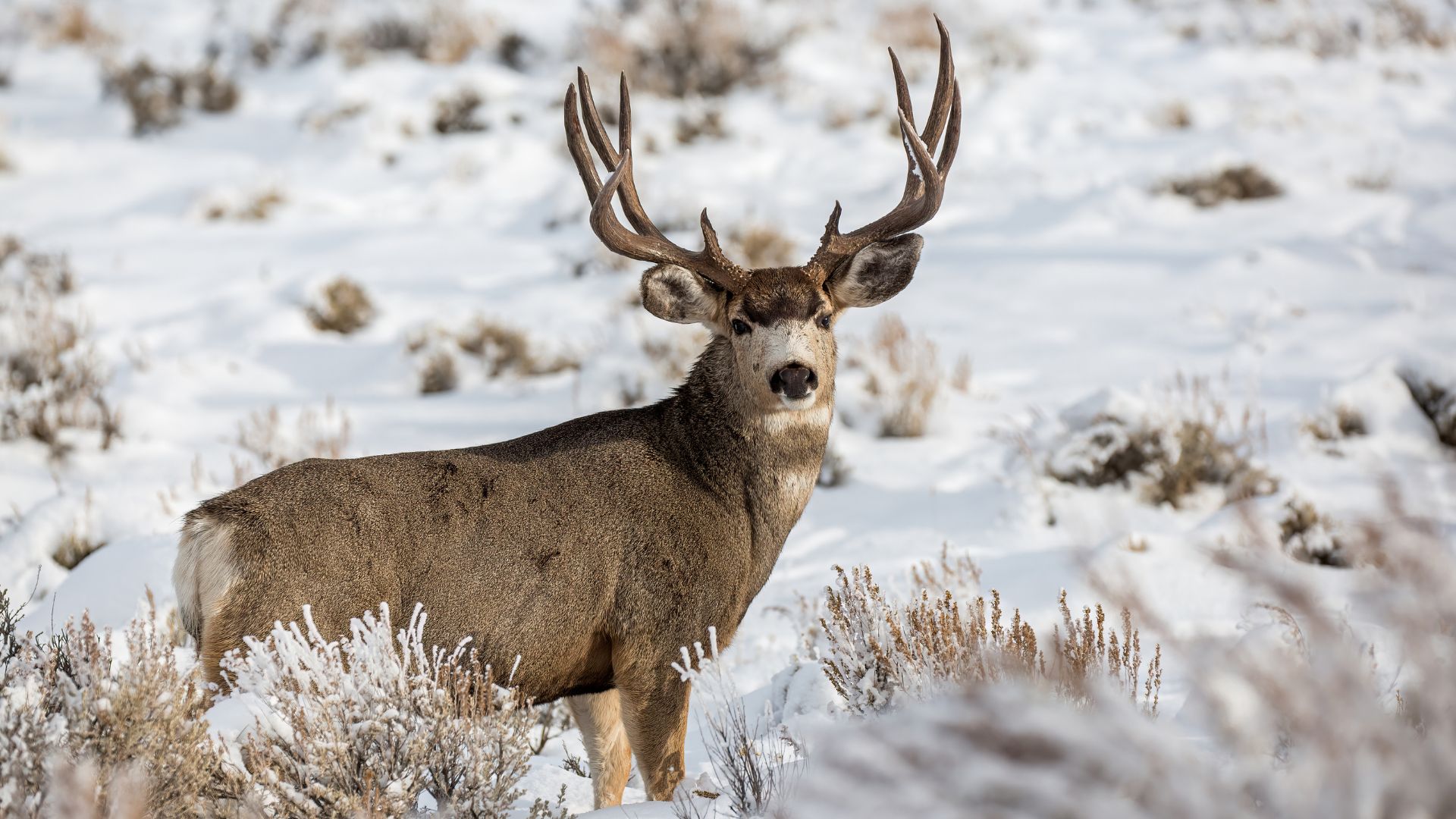Increasing development threatens mule deer habitat

CODY — While the mule deer of the South and North forks possess the resilience to make the annual, arduous trek to the summer range of the high country, they lack the resources to tackle the central threat to their winter range: expanding development along the upper Shoshone River valleys.
They spend their summers in the roughly 3,000 acres in the remote Yellowstone area, and then return to parceled habitat of about 1,000 acres.
“It’s a massive collision of wilderness and human-influenced landscape,” wildlife biologist Tony Mong said. “We’re at a crossroads. We’re paper-cutting our wildlife to death.”
Still, he added, “this is a place where we can make some good things happen. Now is the time and place.”
He cited the resources currently available to address the issue — “the unprecedented access” to data, funding and partnerships — that will enable the perpetuation of a species that’s important to Park County and the world.
“We need to do our part to ensure that we’re not part of the problem, but are part of the solution,” he said.
Mong, who works out of the Cody Region Office of Wyoming Game and Fish, presented a program on mule deer December 5 at the Buffalo Bill Center of the West.
Before sharing the research data, which includes the deer’s impressive migrations, he started by describing himself as a self-proclaimed “wildlife biographer” who enjoys watching muleys bound over the countryside.
“Mule deer represent a connection to a wild place,” he said as another reason for their appeal. “We have a primal drive to be connected to the landscape. They represent the beauty, mystery and wild spirit of the Western landscape. But they’re in a bit of trouble.”
Wyoming herds, which numbered 450,000 during 2005-2010, have declined to about 200,000 currently. Fewer numbers also persist in the South and North fork herds, though the mule deer seem healthy and abundant because they’re so visible.
Those herds spend their winters in the lowlands from late fall to early spring and travel to the west for summer range from early spring to late fall, following the greening of the vegetation.
“It’s a dichotomy of two different places,” Mong said, “the least human-influenced landscape and the increasingly more human-influenced landscape. It’s a story of stark contrast.”
The winter range is seeing more buildings, more roads and more habitat conversion that comes with more people, dogs and traffic, causing more stress and wasted energy.
Private land comprises 45% of deer winter range, including some former hay fields that have been chopped into small, fenced parcels.
“Since 2020, there’s been a crazy increase in the number of buildings,” Mong noted. “It’s an affront to the senses,” to go from the Thorofare area to backyards.
The summer range, by comparison, is “the most rugged and inaccessible country in the lower 48,” he said, with its 12,000-foot peaks, deadfall and multiple, major river systems.
When Mong sees an image showing the migratory treks done by the mule deer, he said he has the same reaction: “I can’t believe they did that!”
Every spring, they travel about 75 miles in two to three weeks, from the river valleys to the Yellowstone backcountry along routes that can mean navigating over 20,000 feet in elevation gains and losses. They also encounter predators, rushing rivers and adverse weather.
Further, the does are usually nine months pregnant and drop their fawns in the park.
“And they deal with other snippy deer,” he said.
Mong finds other feats equally impressive. He reported deer on Rattlesnake Creek going up and over Trout Peak, a juvenile from the South Fork wintering in the Owl Creeks near Thermopolis, and three locals migrating past Jackson and Jenny lakes to summer behind Grand Teton.
“These animals can move,” he said. Of the South Fork herd, “93 percent of them migrate. It’s mind-boggling to me.”
That information comes from GPS collars, which helps G&F manage the mule deer. The agency also relies on ground counts, trail cameras, check stations and harvest surveys.
“We like data,” Mong said.
For the first time, researchers had access to video collars last year, which revealed information about food selection, habitat quality, and interactions with other species.
One clip showed a doe in a backcountry cave, breathing heavily before giving birth, licking her fawn and then, when the fawn became antsy, putting a leg over the fawn.
“The females in the population are the most important, the young too,” Mong said, because they’re essential to perpetuating the species. Data show the doe-fawn ratio is declining and nearing the number to ensure stability and growth. Consequently, “there’s been no real doe season since 2016.”
Data from 2018 shows buck mortality is caused by 35% harvest, with the rest due to under 1% wolf, 2% vehicle, 6% disease, 10% coyotes, 20% winter, 22% mountain lion and 41% unknown, according to preliminary results.
“A high proportion just ‘tip over,’” Mong noted.
As for disease, CWD rates have skyrocketed on the South Fork, from 4.3% in 2018 to 33.3% in 2023. By comparison, rates for the North Fork herd grew from 2.9% to 6.3% over the same period.
After a 50% herd loss in 2017, the deer population rebounded to about 6,500 today, below G&F’s objective of 12,000. “They’re slow to grow,” Mong said.
Although the situation may cause despair, he cited encouragement from conservationist Aldo Leopold (1887-1948): “That the situation appears hopeless should not prevent us from doing our best.”
Mong also encouraged the audience to help provide open lands.
This story was published on December 11, 2024.







